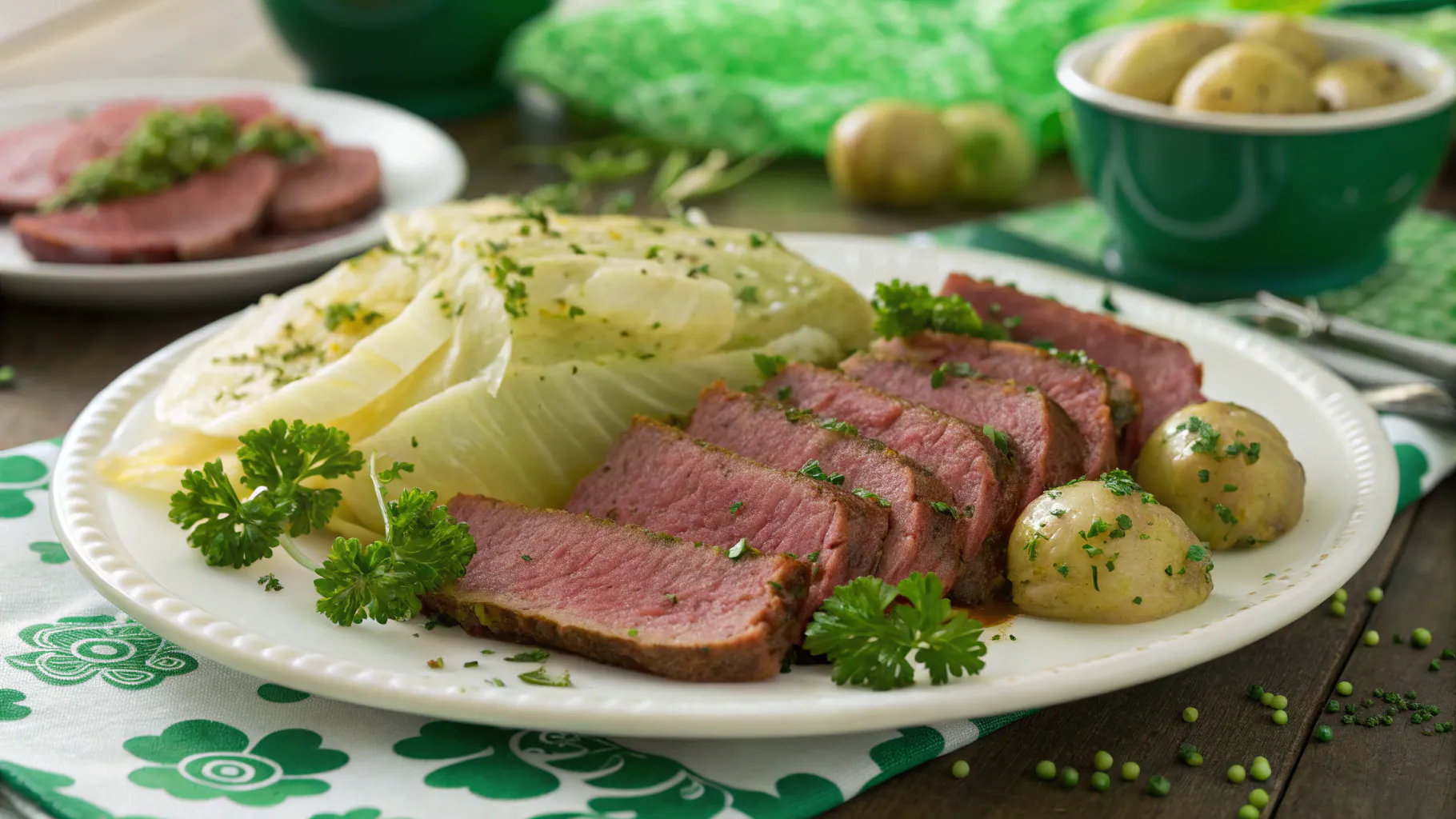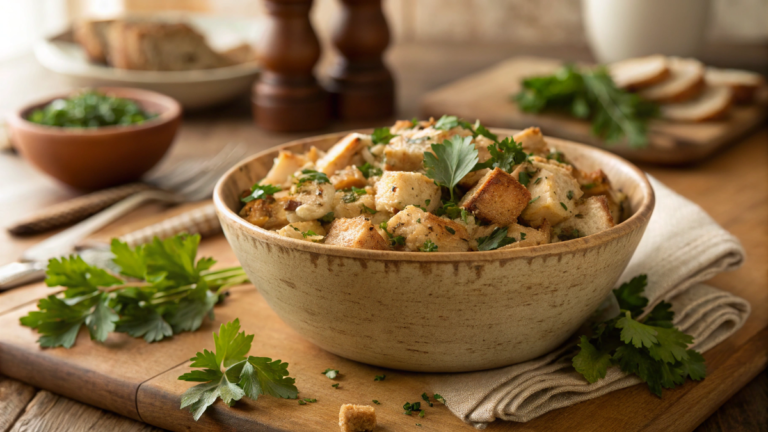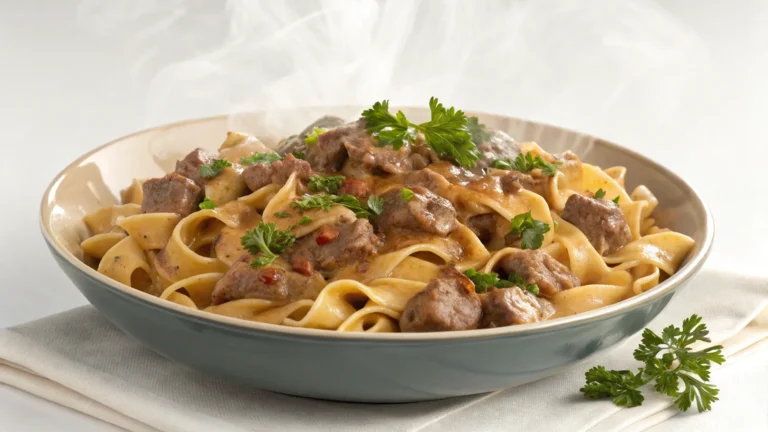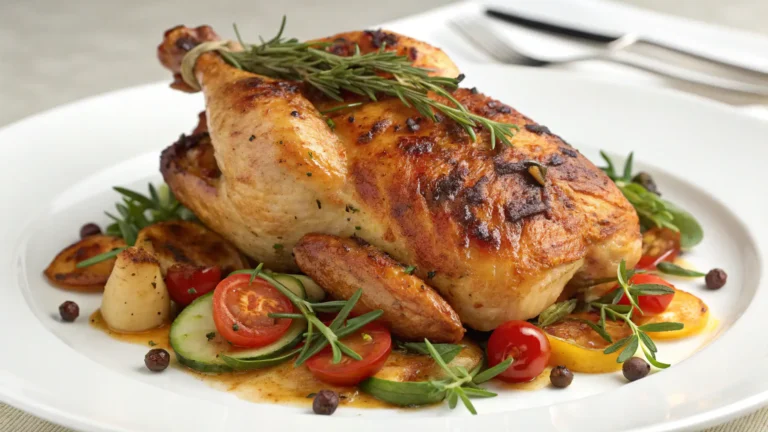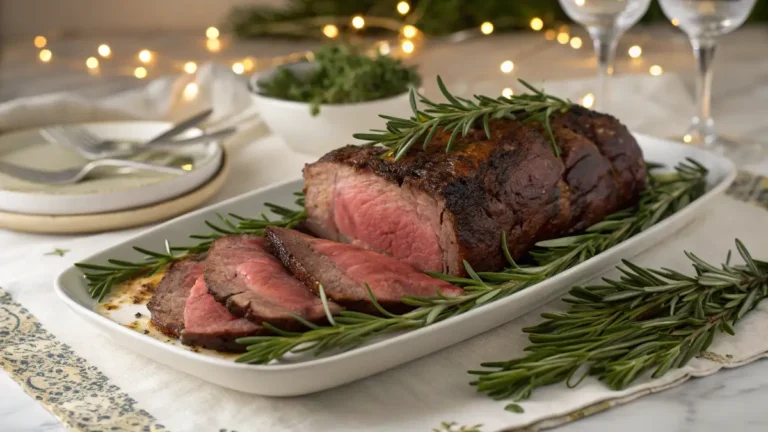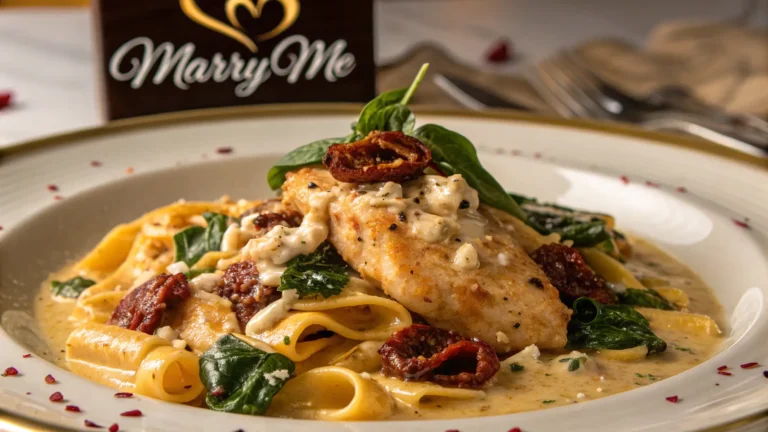Exclusive st. patrick’s day recipe and jaw-dropping taste
Are you ready to bring a taste of Ireland into your kitchen? This St. Patrick’s Day recipe is not only a delightful way to celebrate but also a chance to bond with family and friends. As you gather around the table, you’ll create lasting memories while enjoying the rich flavors of traditional Irish cuisine. Moreover, cooking together enhances the festive spirit, making it a perfect opportunity for family bonding. So, let’s dive into this culinary adventure that promises to impress your guests and elevate your celebrations!
Table of Contents
Key Benefits
This St Patrick’s Day recipe is not just about delicious food; it’s a celebration of culture and togetherness. By preparing this dish, you’re embracing the spirit of festive cooking, which can enhance your family bonding time. Here are some key benefits:
- Cultural Celebration: This recipe connects you to traditional Irish cuisine, allowing you to honor the rich heritage of St. Patrick’s Day.
- Health Benefits: Using fresh ingredients like potatoes and cabbage means you’re not only enjoying great flavors but also nourishing your body, Explore the nutritional advantages of fresh ingredients like potatoes and cabbage by reading Healthline’s comprehensive guide on potato nutrition.
- Flavor Enhancement: The combination of herbs and spices elevates the taste, making your meal memorable for everyone at the table.
- Family Bonding: Cooking together can create lasting memories, turning meal prep into a fun family activity.
In essence, this St. Patrick’s Day recipe brings people together, celebrates tradition, and offers a delightful culinary experience.
Ingredients for Your St. Patrick’s Day Recipe
Gathering the right ingredients is essential for crafting a memorable St. Patrick’s Day recipe. Below, you’ll find a list of what you need, along with some tips to help you choose the best options:
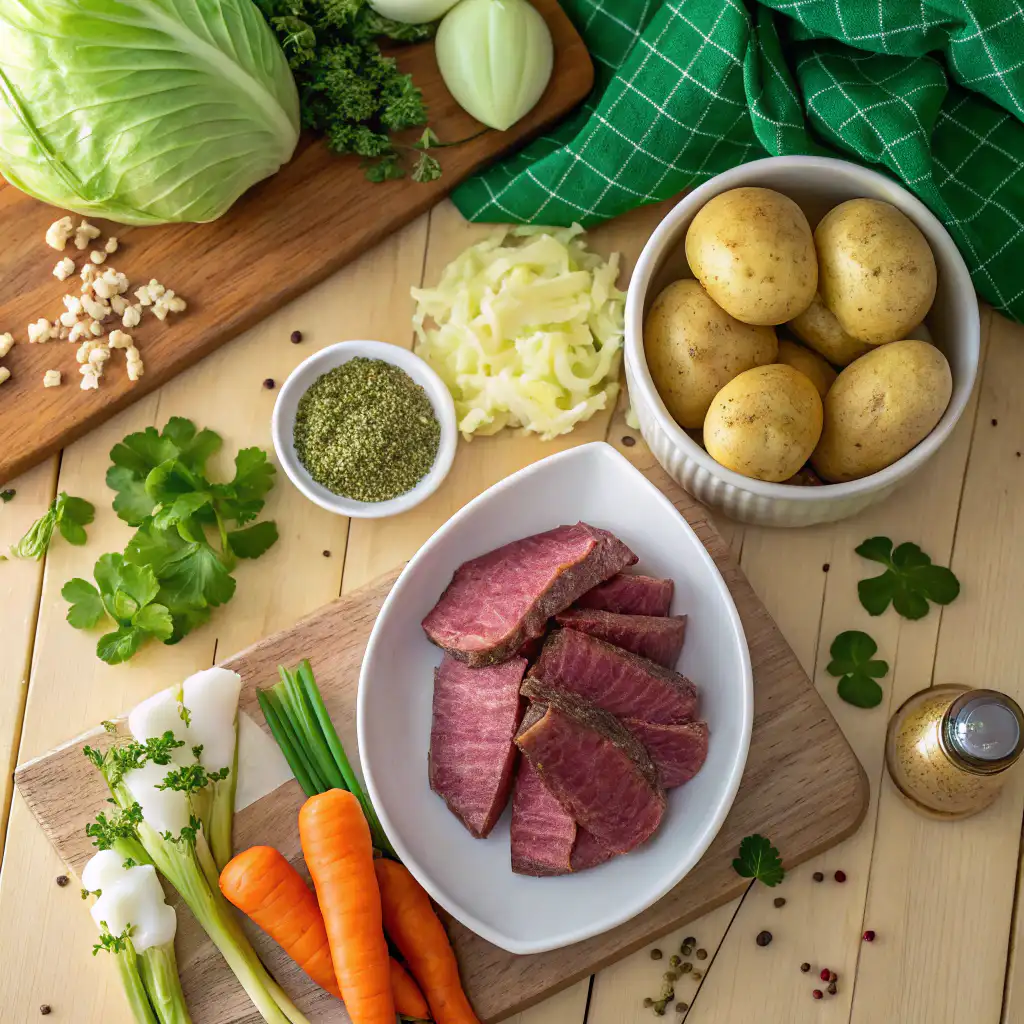
- Potatoes: Use about 2 pounds of Yukon Gold or Russet potatoes. These varieties are creamy and perfect for mashing. If you prefer, you can substitute with sweet potatoes for a twist.
- Cabbage: One medium head of green cabbage will do. Look for firm, vibrant heads. Alternatively, savoy cabbage adds a lovely texture and flavor.
- Corned Beef: About 3 pounds of corned beef brisket is ideal. When selecting, choose one that has a good amount of marbling for tenderness. If you’re looking for a vegetarian option, hearty mushrooms or jackfruit can be great substitutes.
- Carrots: A pound of fresh carrots adds sweetness and color. You can also use parsnips for a more earthy flavor.
- Onions: Two medium onions will enhance the dish’s flavor. Yellow onions are a classic choice, but shallots can add a subtle sweetness.
- Herbs and Spices: Fresh thyme and bay leaves are traditional. Additionally, a sprinkle of black pepper and a pinch of mustard seeds can elevate the flavor profile.
- Beef Broth: About 4 cups of low-sodium beef broth will keep everything moist. If you prefer, vegetable broth works well for a lighter option.
When preparing your St. Patrick’s Day recipe, remember that fresh produce makes a significant difference in flavor. Therefore, visit your local farmer’s market if possible. Also, don’t hesitate to experiment with ingredient substitutions to suit your taste. For instance, if you’re out of thyme, rosemary can be a delightful alternative. Overall, these ingredients will come together to create a dish that not only celebrates the holiday but also warms the heart.
How to Make St. Patrick’s Day Recipe
Follow this step-by-step guide to master your St. Patrick’s Day recipe. First, gather all your ingredients. This ensures you have everything you need before you start cooking. Now, let’s dive into the cooking process!
- Prepare the Ingredients: Start by washing and peeling 4 large potatoes. Then, chop them into even-sized chunks. Additionally, slice half a head of cabbage into thin strips. This helps them cook evenly.
- Boil the Potatoes: In a large pot, add the chopped potatoes and cover them with water. Bring the water to a boil over medium-high heat. Once boiling, reduce the heat and let them simmer for about 15 minutes, or until fork-tender. Remember, overcooking can make them mushy.
- Add the Cabbage: After the potatoes are tender, add the sliced cabbage to the pot. Cook for an additional 5-7 minutes. This way, the cabbage will be tender yet still vibrant.
- Cook the Corned Beef: While the vegetables are cooking, heat a skillet over medium heat. Add 1 pound of sliced corned beef and sauté until it’s golden brown, about 5-7 minutes. This step enhances the flavor significantly.
- Combine Everything: Once the cabbage is cooked, drain the potatoes and cabbage. Then, return them to the pot. Add the sautéed corned beef, along with salt and pepper to taste. Stir gently to combine, being careful not to mash the potatoes.
- Serve and Enjoy: Finally, transfer the mixture to a serving dish. Garnish with fresh parsley for a pop of color. Serve warm and enjoy your delicious St. Patrick’s Day recipe!
As you follow these steps, remember to taste along the way. This allows you to adjust the seasoning to your preference. Moreover, cooking is all about personal touches!
Pro Tips, Variations & Common Problems
Cooking a delightful St. Patrick’s Day recipe can be a joyous experience, but it’s essential to keep a few pro tips in mind to ensure everything goes smoothly. Here are some insider tips to elevate your dish:
- Use a Slow Cooker: If you prefer a hands-off approach, consider using a slow cooker. This method allows the flavors to meld beautifully over several hours, resulting in a tender and flavorful dish.
- Vegetarian Option: For a meat-free version, swap out corned beef for hearty mushrooms or jackfruit. Both options provide a satisfying texture and absorb flavors well.
- Seasoning Matters: Taste your dish as you cook. If it seems bland, add a pinch of salt or a splash of vinegar to brighten the flavors. Remember, seasoning can make all the difference!
- Monitor Cooking Times: Overcooking can lead to mushy vegetables. To avoid this, check your potatoes and cabbage a few minutes before the suggested cooking time. They should be tender but still hold their shape.
Now, let’s address some common problems you might encounter while preparing your St. Patrick’s Day recipe:
- Texture Issues: If your potatoes are too soft, they may have been boiled for too long. Next time, reduce the cooking time and check for doneness earlier.
- Flavor Imbalance: If your dish tastes off, it might need more acidity. A squeeze of lemon or a dash of vinegar can enhance the overall flavor profile.
- Ingredient Swaps: If you’re missing an ingredient, don’t fret! For instance, if you lack cabbage, kale or Brussels sprouts can work as excellent substitutes.
By keeping these tips in mind, you’ll not only troubleshoot common issues but also create a memorable St. Patrick’s Day recipe that your family and friends will love. Enjoy the cooking process, and don’t hesitate to get creative!
Serving Suggestions for Your St. Patrick’s Day Recipe
When it comes to serving your St. Patrick’s Day recipe, presentation is key! You want to create a festive atmosphere that delights both the eyes and the palate. Here are some engaging serving ideas that will surely impress your guests:
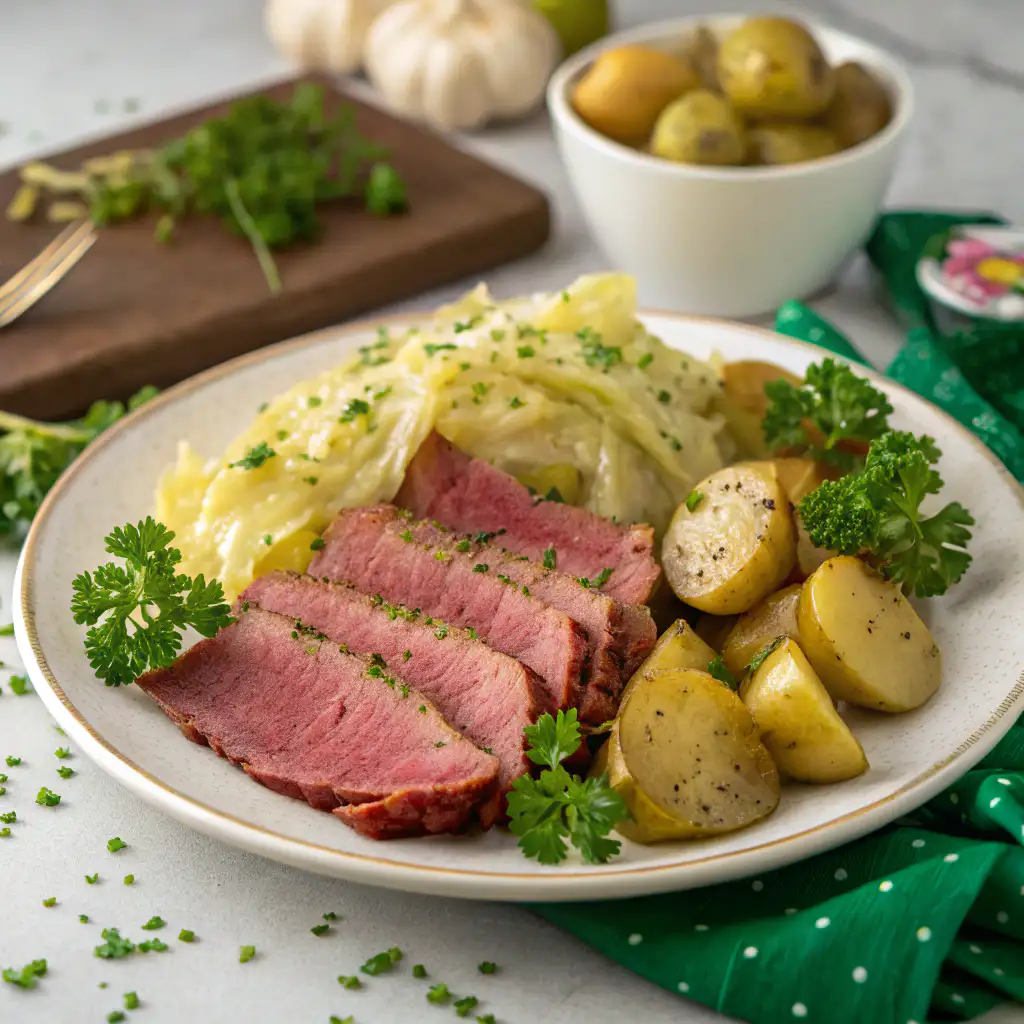
Plating Ideas
Start by plating your dish on vibrant, colorful plates. For instance, consider using green or gold dishes to reflect the holiday spirit. Additionally, garnish with fresh herbs like parsley or chives for a pop of color. This not only enhances the visual appeal but also adds a fresh flavor to your St. Patrick’s Day recipe.
Side Dish Pairings
To complement your main dish, serve it alongside traditional Irish sides. Irish soda bread is a must-have; its warm, crusty texture pairs beautifully with your recipe. Furthermore, a light green salad with a tangy vinaigrette can balance the richness of the main dish. For an extra touch, consider adding roasted root vegetables, which not only taste great but also add a rustic charm to your table.
Creative Serving Options
Depending on your gathering style, you can choose different serving methods. For a casual setting, serve family-style, allowing guests to help themselves. This encourages conversation and a relaxed atmosphere. Conversely, if you’re hosting a more elegant affair, consider plating individual servings with a drizzle of sauce and a sprinkle of microgreens for a refined touch.
Drink Pairings
No St. Patrick’s Day celebration is complete without the perfect drink! Pair your dish with a classic pint of Guinness for an authentic experience. Alternatively, you could serve a festive green beverage, such as a mint-infused lemonade or a sparkling apple cider. These drinks not only enhance the meal but also add to the celebratory vibe of your St. Patrick’s Day recipe.
Ultimately, the goal is to create a warm and inviting atmosphere that encourages everyone to enjoy the meal together. So, gather your loved ones, set the table with care, and let your St. Patrick’s Day recipe shine!
Preserving and Reheating Your St. Patrick’s Day Recipe
To ensure your St. Patrick’s Day recipe remains as delightful as the day you made it, proper storage and reheating are essential. First, let’s talk about storage. After enjoying your festive meal, allow any leftovers to cool to room temperature. Then, transfer them into an airtight container. This method not only keeps your dish fresh but also prevents any unwanted odors from mingling in your fridge. Generally, your St. Patrick’s Day recipe will stay fresh in the refrigerator for up to three days. If you want to keep it longer, consider freezing it. In the freezer, it can last for about three months. Just make sure to label the container with the date, so you know when it was stored. Additionally, if you have a vacuum sealer, use it! Vacuum-sealing can significantly extend the shelf life of your dish, keeping it safe from freezer burn.
Now, let’s discuss food safety. Always remember to refrigerate leftovers within two hours of cooking. This practice helps prevent bacterial growth, ensuring your meal remains safe to eat. If you notice any off smells or unusual textures, it’s best to err on the side of caution and discard the food.
Reheating Methods
When it comes to reheating your St. Patrick’s Day recipe, you want to preserve that jaw-dropping taste and texture. The best methods include using the stovetop or oven, as these options help maintain moisture. If you choose the stovetop, simply place your leftovers in a skillet over medium-low heat. Add a splash of broth or water to keep it moist. Stir occasionally, and in about 5-10 minutes, your dish should be heated through. Alternatively, if you prefer the oven, preheat it to 350°F (175°C). Place your dish in an oven-safe container, cover it with foil, and heat for about 15-20 minutes. This method ensures even heating without drying out your meal.
If you’re in a hurry, the microwave is a convenient option. However, to avoid uneven heating, place your leftovers in a microwave-safe bowl and cover it with a damp paper towel. Heat in 30-second intervals, stirring in between, until warmed through. This technique helps retain moisture and prevents overcooking.
Lastly, if you want to refresh the flavors, consider adding a little extra seasoning or a splash of vinegar before serving. This small touch can elevate the dish and bring back that festive spirit. By following these storage and reheating tips, you’ll enjoy your St. Patrick’s Day recipe just as much the second time around!
Conclusion
In summary, this St. Patrick’s Day recipe is not only simple to prepare but also incredibly versatile. By following the key steps of boiling, sautéing, and simmering, you can create a dish that celebrates the rich flavors of Irish cuisine. Moreover, the use of fresh ingredients like potatoes and cabbage ensures a delightful meal that is perfect for family gatherings. So, why not give it a try? You’ll find that cooking can be both fun and rewarding, especially when you share it with loved ones.
Share Your Experience
We would love to hear about your culinary adventures! Feel free to share your results or ask any questions you might have. Additionally, don’t hesitate to experiment with variations or pairings that suit your taste. Whether you add a twist to the recipe or serve it alongside your favorite dishes, the possibilities are endless. Remember, cooking is about creativity and joy, and this St. Patrick’s Day recipe is a fantastic way to express that spirit in your kitchen.
Hungry for more delicious creations? Browse our site for more recipes and endless inspiration to spark your next culinary adventure!
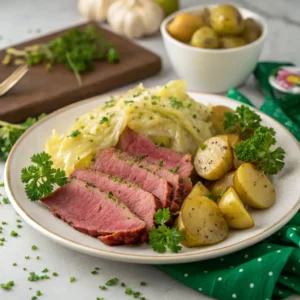
st patrick’s day recipe
Ingredients
Vegetables
- 2 pounds Potatoes Yukon Gold or Russet, can substitute with sweet potatoes.
- 1 medium head Cabbage Green or savoy cabbage.
- 1 pound Carrots Fresh carrots, can substitute with parsnips.
Meat
- 3 pounds Corned Beef Brisket with good marbling, can substitute with mushrooms or jackfruit.
- 2 medium Onions Yellow onions or shallots.
Broth
- 4 cups Beef Broth Low-sodium, can substitute with vegetable broth.
Herbs and Spices
- to taste Fresh Thyme Traditional herb.
- to taste Bay Leaves Traditional herb.
- to taste Black Pepper For seasoning.
- to taste Mustard Seeds Optional for flavor enhancement.
Instructions
Preparation
- Start by washing and peeling the potatoes. Chop them into even-sized chunks and slice half a head of cabbage into thin strips.
Boiling
- In a large pot, add the chopped potatoes and cover them with water. Bring to a boil over medium-high heat, then reduce heat and simmer for about 15 minutes, or until fork-tender.
Adding Cabbage
- After the potatoes are tender, add the sliced cabbage to the pot and cook for an additional 5-7 minutes.
Cooking Corned Beef
- While the vegetables are cooking, heat a skillet over medium heat. Add the sliced corned beef and sauté until golden brown, about 5-7 minutes.
Combining
- Once the cabbage is cooked, drain the potatoes and cabbage. Return them to the pot, add the sautéed corned beef, and season with salt and pepper to taste. Stir gently to combine.
Serving
- Transfer the mixture to a serving dish, garnish with fresh parsley, and serve warm.
Video
Notes
| Calories | Fat | Protein | Carbs |
|---|---|---|---|
| 350 | 15g | 25g | 30g |
FAQs about St. Patrick’s Day Recipe
Have questions about your St. Patrick’s Day recipe? Here are some common inquiries that might help you out!
What is a traditional St. Patrick’s Day meal?
A traditional St. Patrick’s Day meal often includes corned beef, cabbage, and potatoes. These ingredients reflect Irish heritage and are perfect for celebrating the holiday with family and friends.
Can I make this recipe vegetarian?
Absolutely! You can substitute corned beef with hearty vegetables like mushrooms or jackfruit. This way, you can still enjoy a delicious St. Patrick’s Day recipe while accommodating dietary preferences.
How can I enhance the flavors of my dish?
To enhance the flavors, consider adding fresh herbs like parsley or thyme. Additionally, using quality spices can elevate your St. Patrick’s Day recipe, making it even more delightful.
What should I serve with my St. Patrick’s Day meal?
For a complete meal, serve your dish with Irish soda bread and a green salad. Moreover, pairing it with a pint of Guinness or a festive green drink can add to the celebratory atmosphere.
How do I store leftovers from my St. Patrick’s Day recipe?
Store leftovers in an airtight container in the refrigerator for up to three days. When reheating, do so gently in the microwave or on the stovetop to maintain the dish’s flavors and textures.
